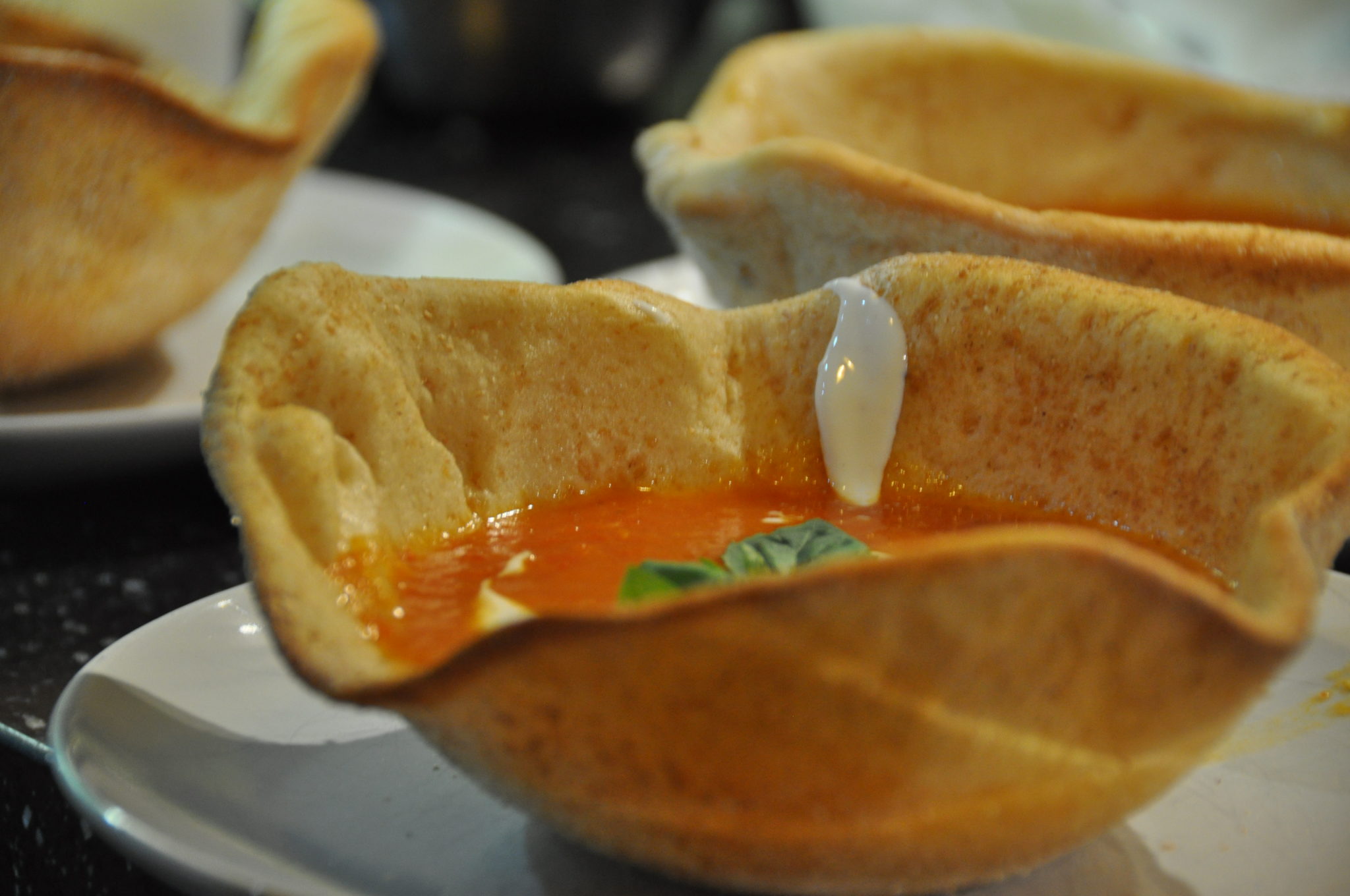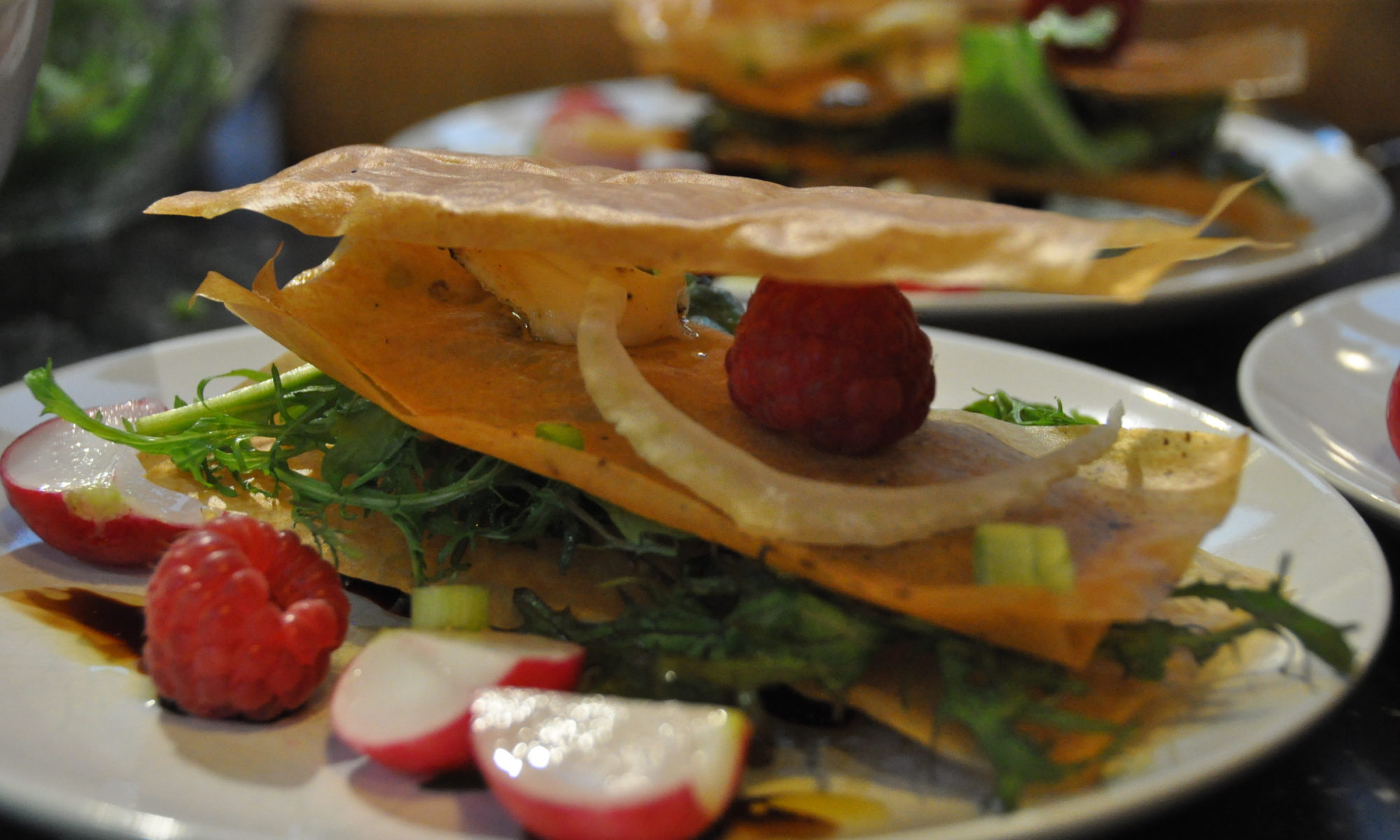Fleischkäse is a German meat loaf made from cured sausage meat. Hard to describe but delicious and, thanks to these guys, I managed to make it myself to great success: selber-wurst-machen.de
You need a mincer, a kitchen machine with a rotating blade, and you need to find a suitable emulsifier. Best to read the whole story first:
Following is the commented and ever so slightly modified recipe based on their Fleischwurst recipe. I’ll come back to the difference later.
Prior to anything else, start freezing approximately 150 ml of clean water per kilo of meat into ice cubes.
Buy 1 kg pork meat and fat, not counting skin or bones. A fatty pork belly is perfect, but it may need boosting with a less fatty piece of shoulder joint if it has very much fat. (See note on the meat composition at the end of the article.)
Trim the meat: remove skin, bones, sinew, but keep all the fat. Then cut into stripes suitable for your mincer and place them in the deep freezer for half an hour. The meat needs to be cold and firmed up for ease of processing.
Meanwhile, prepare the spice mix:
18 g curing salt (see note on salt below)
3 g hot smoked paprika powder
2.5 g finely ground pepper mixed from 75% black pepper and 25% allspice
1 g caster sugar
1 g ground mace
1 g ground coriander
1 g ground ginger
0.5 g ground cardamon seeds
1 glove of fresh garlic puree or 2..3 g of dried garlic powder
3..5 g emulsifier (“Kutterhilfsmittel” – see note below)
Now put it all together. It’s important to work quickly now so that the sausage meat stays cold through the process:
Mince the meat using your mincer’s finest setting. That might require two round trips starting with a larger disk, depending on your mincer. Set aside, away from heat sources.
Turn your ice cubes into ice snow using a blender, ice crusher or place them in a zip-lock bag and bash to smithereens using a rolling pin.
Mix the minced meat with the spices and emulsifier quickly and thoroughly, then put it into your kitchen machine’s rotating cutter device. Mine takes about 500 g in one session, so I split the meat into two portions for this.
Run it at full whack. The idea is to chop the mince even finer. While chopping, add the ice snow. After a short while, the mix turns into a not very appealing light brown and glossy mush. Perfect! Out with it before it turns warm.
To make Fleischwurst, you’d now use your sausage filling facility to fill pork intestines. Once filled and closed off, you’d simmer these very gently at 70 C for 45 minutes, then let cure for 24 hours.
To make Fleischkäse, you’d form a loaf within a baking tray and bake at 75 C until the loaf’s core reaches 70 C, then allow for 5 extra minutes. Remove from the tray and try a slice immediately. It won’t get any better than now, fresh from the oven, warm and juicy. Never ever.
Any leftovers can cool down, mature for 24 hours in the fridge. You can eat it cold, gently fry a slice with a knob of butter and serve with a fried egg or gently heat with steam, such as the steam of a portion of Sauerkraut.
Voila!
Note on Salt and Spices:
They specify 20 g curing salt for a kilo of meat. I find it good but on the salty end of the scale, hence my suggestion for a slightly lower salt content. On the other hand I have increased some of the spice amounts: firstly because I like a robust savoury flavour and secondly because I struggle to weigh 0.5 g even with my finest scale.
I use curing salt because it helps preserve the produce and retains an appealing pink colour. I suppose you can also use regular cooking salt if you eat it right away and accept a less appealing slightly grey colour.
Note on Meat Selection:
They specify 60% pork belly, 30% bacon joint and 10% beef. I am sure that’s perfect but honestly, a nice meaty and fatty chunk of pork belly works for me. In the UK simply ask your local Polish butcher! You need a fair amount of fat so depending on the belly joint you might need to add some white pork fat or a chunk of meat (back leg or shoulder joints will be fine).
Note on Emulsifier:
You need something to help amalgamate and stabilise your emulsion of fat, water and meat. That’s the emulsifier for you. It’s Kutterhilfsmittel in German (preferably “mit Umrötung” for a nicer colouring) and can be found online.
If you ever wondered why German menus always show Bratwurst with a footnote informing you that the Wurst contains phosphate, now you know. Kutterhilfsmittel, that’s why.



































































 This simple apple cake, topped with a baked soured cream custard, is a household favourite and has won approval on very many occasions, least of all by myself because it is so very quickly made. It’s also the perfect way of using limp apples towards the end of their shelf life.
This simple apple cake, topped with a baked soured cream custard, is a household favourite and has won approval on very many occasions, least of all by myself because it is so very quickly made. It’s also the perfect way of using limp apples towards the end of their shelf life.













 Gravlax, or Graved Lax, is a dish made from raw cured salmon. It is very easy to make, and very delicious to eat. I find it is best enjoyed with horseradish or mustard sauce on a slice of flavoursome bread and with a little green side salad, but whether you have it for breakfast, for elevenses, for lunch, as a starter or for your supper is up to you.
Gravlax, or Graved Lax, is a dish made from raw cured salmon. It is very easy to make, and very delicious to eat. I find it is best enjoyed with horseradish or mustard sauce on a slice of flavoursome bread and with a little green side salad, but whether you have it for breakfast, for elevenses, for lunch, as a starter or for your supper is up to you.










